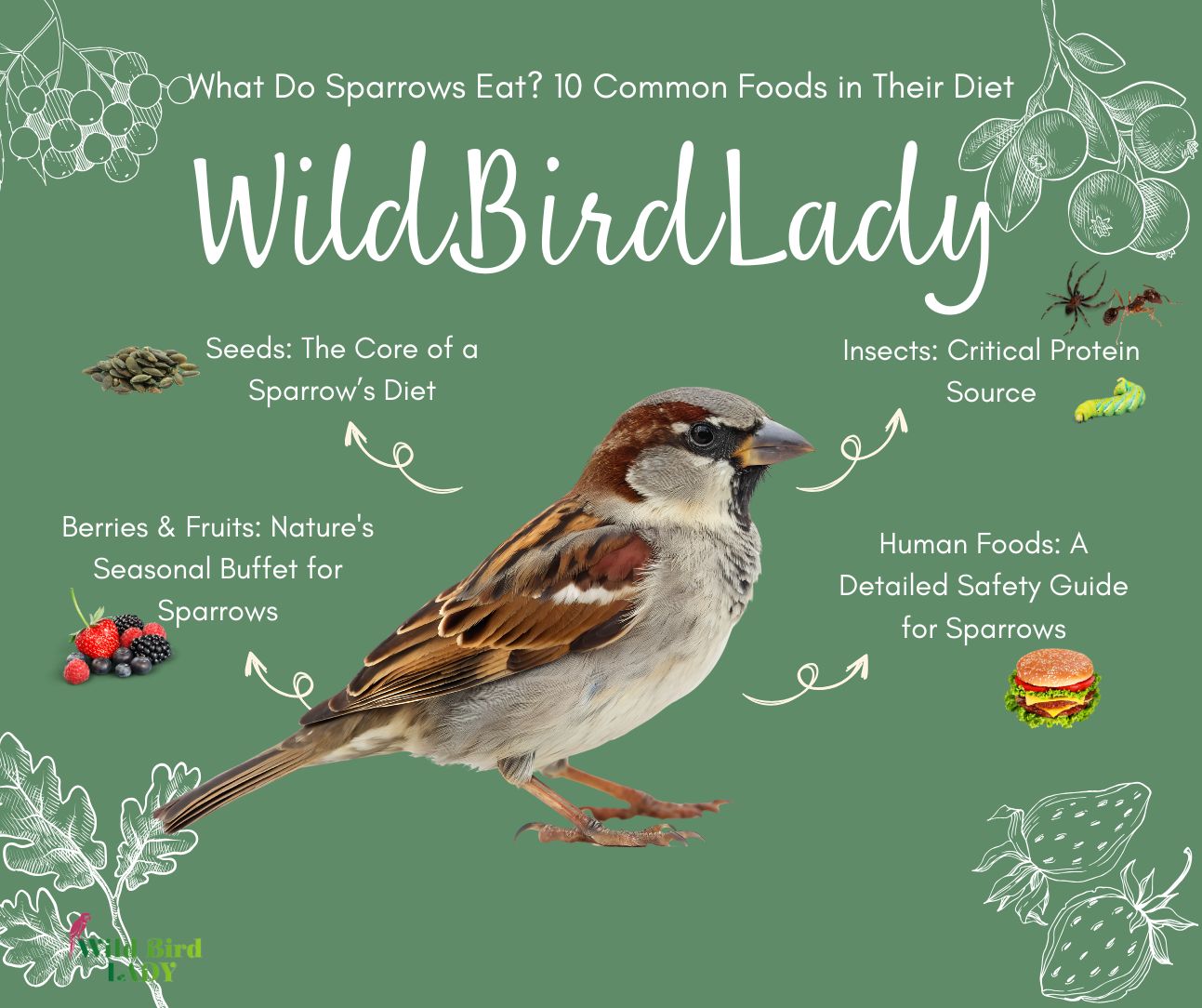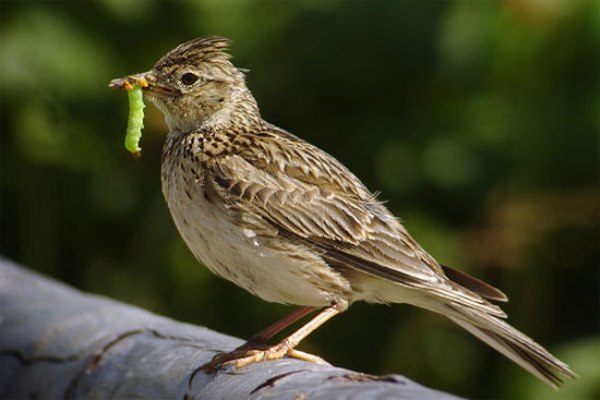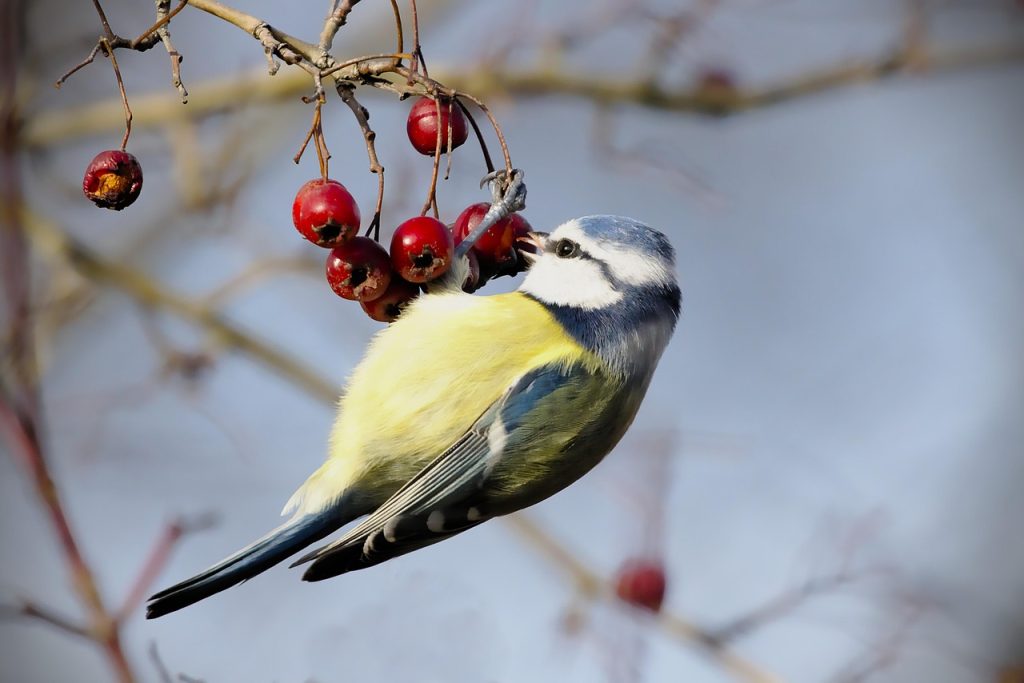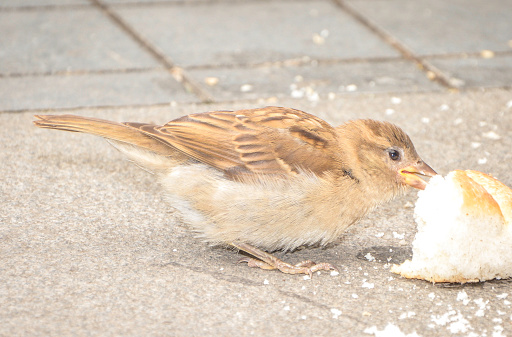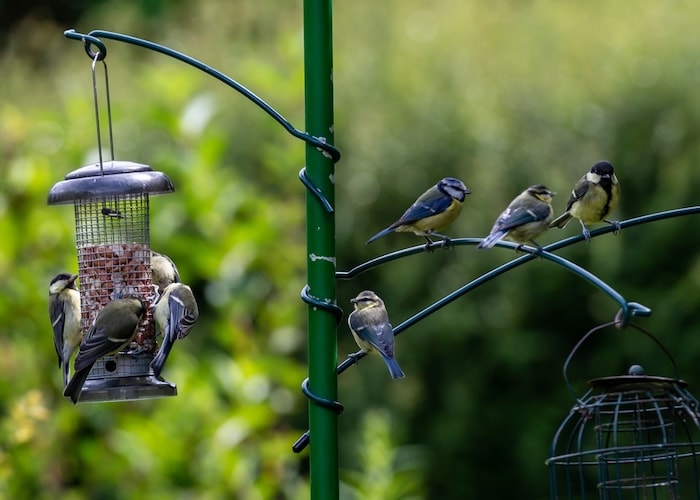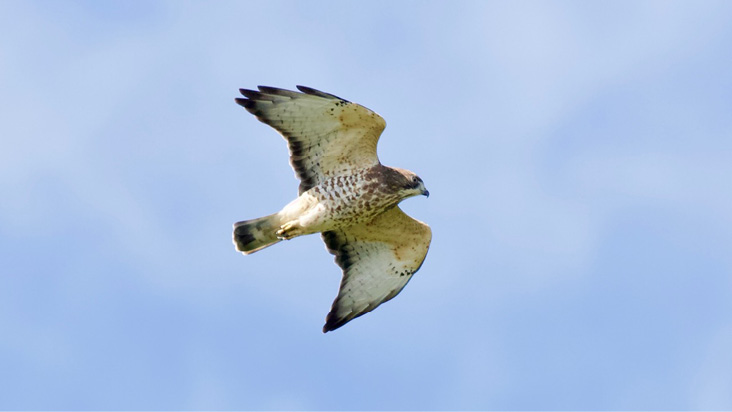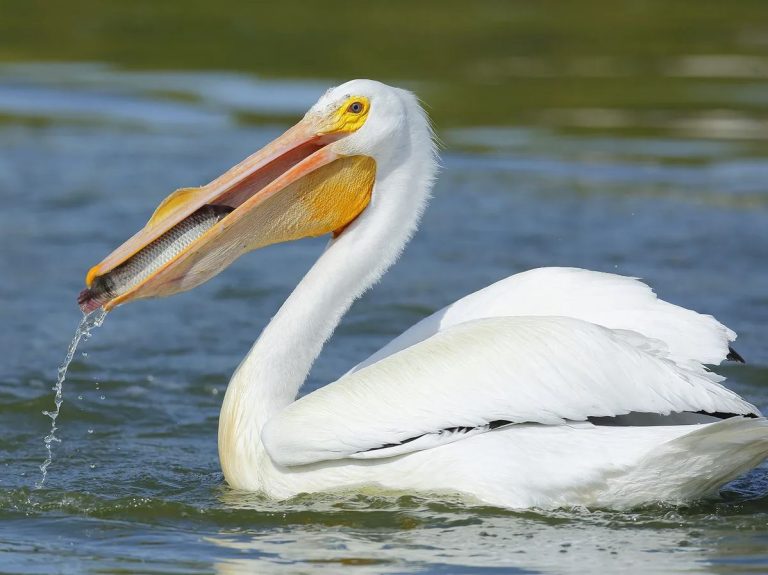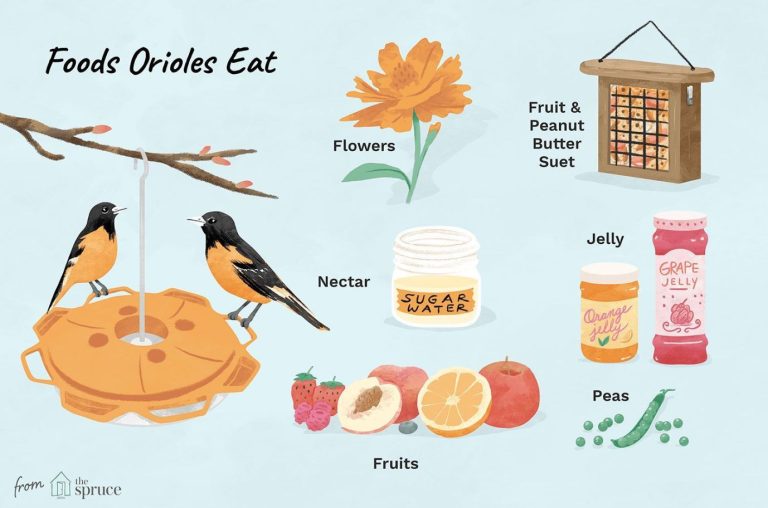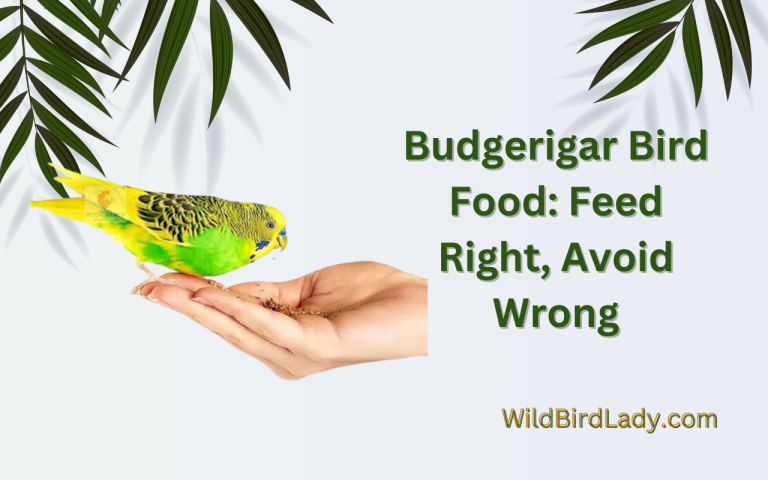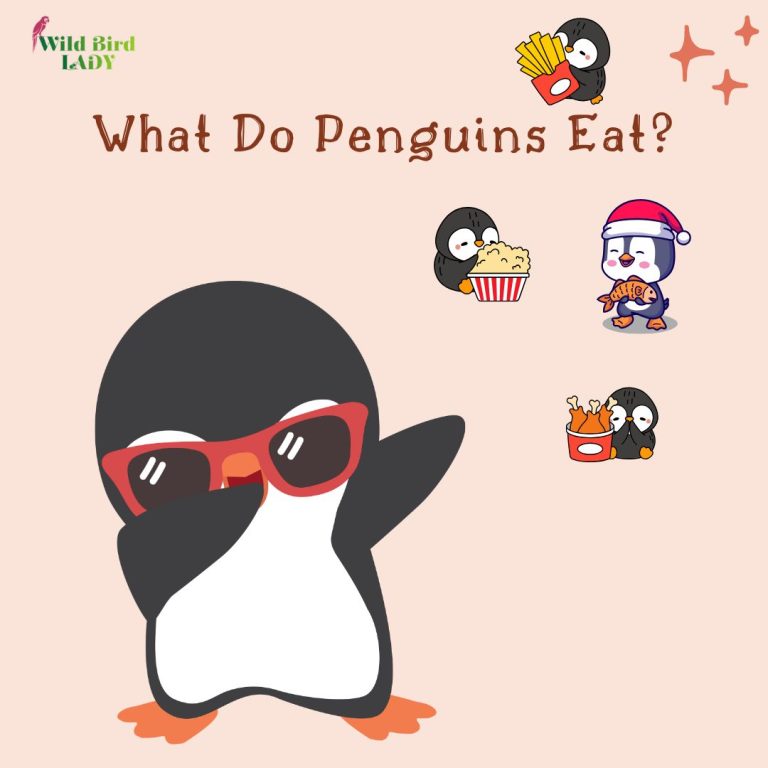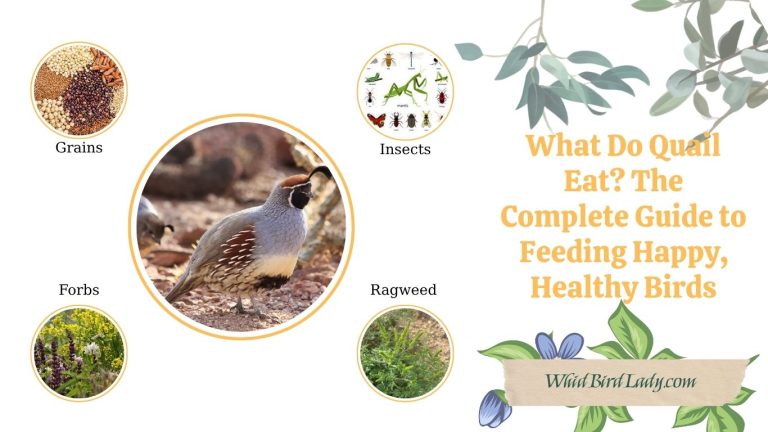What Do Sparrows Eat? 10 Common Foods in Their Diet
Introduction: Understanding Sparrow Dietary Needs
Sparrows (Passeridae family) are highly adaptable songbirds found across urban, suburban, and rural habitats in North America. Their opportunistic feeding habits contribute to their survival, but what do sparrows eat to maintain energy and health? More critically, what do baby sparrows eat during their rapid growth phase?
This 2,500+ word guide dives deep into:
✅ 10 natural and feeder foods in adult sparrows’ diets
✅ Baby sparrow nutrition—how parent birds feed hatchlings
✅ Seasonal diet variations (spring vs. winter)
✅ How to ethically feed wild sparrows (dos and don’ts)
✅ FAQs with ornithologist-backed answers
1. Seeds: The Core of a Sparrow’s Diet (60-70% of Intake)
Sparrows are granivorous birds, meaning seeds form the foundation of their diet. Research from the Cornell Lab of Ornithology confirms that seeds provide 60-70% of a sparrow’s annual caloric intake, with urban sparrows consuming 30% more seeds than their rural counterparts due to widespread bird feeder availability.
Why Seeds Are Essential
- High-energy source: Rich in carbohydrates and healthy fats for sustained energy.
- Year-round availability: Unlike insects, seeds remain accessible in winter.
- Easy to store: Sparrows often cache seeds for leaner months.
Top 4 Seed Choices for Sparrows
A. Black Oil Sunflower Seeds
- Why sparrows love them: Thin shells are easy to crack open with small beaks.
- Nutritional value: 50% fat, 20% protein—perfect for energy needs.
- Feeder tip: Use tube feeders with large ports or platform feeders.
B. White Proso Millet
- Preferred by: House Sparrows, Song Sparrows, and juvenile birds.
- Key benefit: Small size makes it ideal for ground-feeding.
- Where to find it: The #1 ingredient in quality “sparrow mix” birdseed blends.
C. Nyjer/Thistle Seeds
- Specialty: Tiny seeds require specialized thistle feeders with small holes.
- Nutrition: 35% fat—attracts finches but also favored by sparrows.
- Pro tip: Offer in mesh socks to prevent waste.
D. Cracked Corn
- Best for: Winter feeding (high-calorie but low-protein).
- Caution:
- Can attract rats, squirrels, and starlings if overused.
- Always mix with higher-quality seeds to balance nutrition.
Seed Comparison Table
| Seed Type | Fat Content | Protein | Best Feeder Type | Seasonal Preference |
|---|---|---|---|---|
| Black Oil Sunflower | 50% | 20% | Tube/Platform | Year-round |
| White Proso Millet | 4% | 12% | Ground/Tray | Year-round |
| Nyjer/Thistle | 35% | 18% | Mesh Sock | Winter |
| Cracked Corn | 3% | 8% | Ground | Winter |
Seeds to Avoid
- Red Milo (Sorghum)
- Problem: Hard outer shell, often ignored by sparrows.
- Common in: Cheap “filler” birdseed mixes.
- Salted or Flavored Seeds
- Risk: Causes kidney damage in birds.
- Old/Moldy Seeds
- Danger: Aflatoxin poisoning can be fatal.
How to Offer Seeds for Maximum Sparrow Appeal
- Ground feeding: Scatter millet under bushes (mimics natural foraging).
- Platform feeders: Ideal for sunflower seeds (sparrows dislike hanging feeders).
- Seed hygiene: Store in airtight containers to prevent mold.
Did You Know? House Sparrows can eat up to 1.5 teaspoons of seeds daily—that’s ~15% of their body weight!
2. Insects: Critical Protein Source (Especially for Baby Sparrows!)
During breeding season (April–August), insects dominate up to 90% of a baby sparrow’s diet. Parents hunt:
High-Protein Insect Prey:
| Insect Type | Nutritional Benefit |
|---|---|
| Mealworms (live/dried) | 50% protein, essential for muscle growth |
| Caterpillars | Soft bodies perfect for hatchlings |
| Grasshoppers & crickets | Chitin aids digestion |
| Aphids & spiders | Easy to catch near nests |
Key Fact: A sparrow pair must deliver 1,000+ insects daily to feed one brood (Cornell Lab of Ornithology).
3. What Do Baby Sparrows Eat? The Complete Nutritional Guide
The Critical First 3 Weeks: From Hatchling to Fledgling
Baby sparrows undergo one of the most rapid growth cycles in the avian world, requiring precise nutrition at each developmental stage. Unlike precocial birds (like ducks) that can forage immediately, sparrow chicks are altricial—born naked, blind, and completely dependent on parents for food.
Stage 1: Days 1-3 (The Regurgitation Phase)
Diet: 100% regurgitated insect slurry
- Composition:
- Partially digested soft-bodied insects (aphids, caterpillars)
- Enzyme-rich crop milk (a protein secretion from parent’s crop)
- Water content: ~75% (prevents dehydration)
Feeding Frequency:
- Every 8-12 minutes from dawn to dusk (~100+ feedings/day)
- Parents alternate shifts to maintain constant food supply
Key Adaptations:
- Chicks’ mouths have bright yellow gapes to stimulate parental feeding
- Esophagus expands to accept 20% of body weight per meal
Stage 2: Days 4-12 (The Insect Growth Spurt)
Diet Transition:
- 80% whole insects (crushed but not regurgitated)
- Mealworms (head removed to prevent biting)
- Moth larvae (high in calcium)
- Spider abdomens (liquid nutrition)
- 20% pre-moistened seeds (only for House Sparrow chicks)
Nutritional Requirements:
| Nutrient | Daily Requirement | Source |
|---|---|---|
| Protein | 65% of diet | Insect exoskeletons |
| Calcium | 2.5mg/g | Snail shells, eggshells |
| Fat | 15% | Caterpillar hemolymph |
Parental Behavior:
- Adults dip seeds in water before feeding to soften
- Remove hard wing cases from beetles
- Reject hairy caterpillars (can choke chicks)
Stage 3: Fledgling (Weeks 2-3)
Self-Feeding Progression:
- Week 2: Parents place live insects near chicks to encourage pecking
- Week 3: Chicks follow parents to ground-level foraging sites
- Week 4: Independent but still beg for 30% of meals
First Solid Foods:
- Suet crumbs (high-energy fat source)
- Millet sprays (easy-to-handle seeds)
- Fruit pulp (blueberries, banana)
Emergency Care for Orphaned Chicks
Immediate Action Protocol:
- Warmth First: Place on heating pad (90°F) in a shoebox with tissues
- Hydration:
- Never give water directly (risk of aspiration)
- Use unflavored Pedialyte on a q-tip for first 2 hours
- Feeding Formula:
- Kaytee Exact: Mix 1:1 with warm water to yogurt consistency
- Feeding Tools:
- 1ml syringe (no needle)
- Paintbrush (for tiny chicks)
- Schedule:
- Days 1-7: Feed every 20 minutes (14 hours/day)
- Week 2: Transition to live mealworms
Deadly Mistakes to Avoid:
✖ Cow’s milk (causes fatal diarrhea)
✖ Bread (swells in crop)
✖ Whole seeds (until week 3)
Comparative Growth Timeline
| Age (Days) | Weight Gain | Primary Food | Special Notes |
|---|---|---|---|
| 1-3 | 0.5g/day | Crop milk | Eyes sealed shut |
| 4-7 | 2g/day | Crushed crickets | Pin feathers emerge |
| 8-12 | 4g/day | Whole insects | First wing flaps |
| 13-20 | Full size | Seed/insect mix | Flight practice |
Expert Tips for Supporting Wild Chicks
- If you find a fledgling:
- Leave it alone if fully feathered (parents are nearby)
- Only intervene if injured or in immediate danger
- Nest box strategy:
- Install sparrow-specific boxes with 1.25″ entrance holes
- Place dried mealworms nearby to help provisioning parents
Did You Know? A sparrow chick’s begging calls can reach 85 decibels—louder than a vacuum cleaner! This ensures parents hear them from over 100 yards away.
4. Berries & Fruits: Nature’s Seasonal Buffet for Sparrows
The Role of Fruits in a Sparrow’s Diet
While sparrows are primarily seed-eaters, they become opportunistic frugivores (fruit-eaters) from late summer through fall when berries ripen and insects decline. Studies show fruit can comprise 15-20% of their autumn diet, providing:
✔ Essential vitamins (A, C, K) for immune health
✔ Natural sugars for quick energy before migration/winter
✔ Water content to supplement hydration
Top 5 Wild Berries Sparrows Love
1. Elderberries (Sambucus spp.)
- Peak Season: August-September
- Nutritional Powerhouse:
- 3x more vitamin C than oranges (per 100g)
- Anthocyanins (antioxidants that reduce inflammation)
- How Sparrows Eat Them:
- Peck at clusters while perched
- Swallow small berries whole
- Avoid unripe berries (contain toxic cyanogenic glycosides)
2. Dogwood Berries (Cornus spp.)
- Why Sparrows Favor Them:
- High fat content (9%)—critical for winter prep
- Soft skin easy for juveniles to digest
- Native Species to Plant:
- Red-osier dogwood (Cornus sericea)
- Flowering dogwood (Cornus florida)
3. Serviceberries (Amelanchier spp.)
- Nickname: “Bird cherry” (sparrows devour them in 2-3 days)
- Key Benefit:
- Seeds pass unharmed through digestion (natural propagation)
- Urban Adaptation:
- Commonly planted in parks—watch for sparrows in ornamental varieties
4. Virginia Creeper Berries (Parthenocissus quinquefolia)
- Controversial but Safe:
- Mildly toxic to mammals but harmless to birds
- Sparrows eat them only after frost (sweetens the berries)
5. Wild Grapes (Vitis spp.)
- Feeding Behavior:
- Sparrows tear open skins to access pulp
- Leave behind dangling “grape skins” as telltale signs
Backyard Fruit Feeding Guide
Safe to Offer
| Fruit | Preparation | Nutritional Benefit |
|---|---|---|
| Apples | Thin slices (no seeds) | Pectin aids digestion |
| Pears | Diced, slightly overripe | Higher sugar content |
| Bananas | Mashed with seeds | Potassium for muscles |
| Melons | Small cubes with rind | 90% water for hydration |
Dangerous Fruits
❌ Cherries, peaches, plums (cyanide in pits)
❌ Citrus fruits (acidity irritates crop)
❌ Dried fruits (can swell in crop unless soaked)
Seasonal Foraging Patterns
- Summer (June-August): Focus on protein-rich insects for chicks
- Fall (September-November): Shift to berries (70% of fruit intake)
- Winter: Rarely eat fruit unless persistent berries remain (e.g., winterberry holly)
Pro Tips for Attracting Sparrows with Fruit
- Mimic Natural Presentation:
- Skewer apple slices on branches
- Scatter berries on platform feeders (not hanging)
- Fermentation Warning:
- Remove uneaten fruit within 24 hours (prevents alcohol production)
- Native Planting Strategy:
- Plant berry shrubs in clusters for shelter + food
- Example: Elderberry + dogwood + serviceberry trio
Did You Know? Sparrows’ beak strength allows them to crack frozen berries in winter that other birds can’t access!
5. Human Foods: A Detailed Safety Guide for Sparrows
The Risks and Rewards of Human Foods
Sparrows are highly adaptive and often forage near human habitats, but not all human foods are safe for their delicate digestive systems. While some kitchen scraps can supplement their diet, others can cause organ failure, poisoning, or choking.
This section breaks down:
✅ Safe human foods (and how to prepare them)
❌ Toxic foods (and why they’re dangerous)
⚠️ Controversial foods (some debate among experts)
Approved Human Foods (In Moderation)
1. Plain Cooked Rice
- Best Type: Brown rice (higher fiber, nutrients)
- Preparation:
- Cook without salt or oil
- Cool to room temperature
- Mash slightly for fledglings
- Why It’s Safe:
- Easily digestible carbohydrates
- Common in agricultural areas (sparrows naturally eat grain residues)
2. Unseasoned Oatmeal
- Best Form:
- Steel-cut or rolled oats (never instant—contains additives)
- Soaked in water for chicks (creates a soft gruel)
- Nutritional Benefit:
- Beta-glucans support heart health
- Slow energy release for cold mornings
3. Hard-Boiled Egg Bits
- Preparation:
- Finely chop yolk + white (no seasoning)
- Mix with crushed eggshells (calcium boost)
- When to Offer:
- Breeding season (extra protein for parents/chicks)
- Winter (high-fat content for warmth)
4. Whole Grain Bread (Occasionally)
- Key Rules:
- Only 100% whole wheat (no sugar, raisins, or additives)
- Soak in water to soften (prevents crop impaction)
- Limit to 1x/week (low nutritional value)
5. Unsalted Peanut Butter
- How to Serve:
- Thin smear on pine cones or bark
- Mix with cornmeal to reduce stickiness
- Caution:
- Must be free of xylitol (deadly artificial sweetener)
Toxic Foods (Never Feed These!)
| Food | Toxic Compound | Effect on Sparrows |
|---|---|---|
| Chocolate | Theobromine | Seizures → death in 24hrs |
| Avocado | Persin | Heart muscle damage |
| Salted Nuts | Sodium | Kidney failure |
| Onions/Garlic | Thiosulfate | Anemia (destroys RBCs) |
| Caffeine | Methylxanthines | Nervous system collapse |
Special Warning:
- Fried foods (e.g., French fries) cause liver disease from excess fat
- Moldy bread produces aflatoxins—just 0.1g can kill a sparrow
Controversial Foods (Experts Debate)
1. Dairy Products
- Small amounts of plain yogurt (cultured = lactose reduced) may be tolerated
- Never milk—sparrows lack lactase enzymes
2. Cooked Pasta
- Safe if: Whole wheat, unsalted, cut into tiny pieces
- Risk: Gluten may cause indigestion in some birds
3. Raw Vegetables
- Carrots/peas: Safe but rarely eaten (sparrows prefer seeds)
- Potatoes: Only cooked (raw solanine is toxic)
How to Safely Offer Human Foods
- Presentation Matters:
- Use terracotta saucers (easy to clean, mimics ground feeding)
- Avoid plastic (can harbor bacteria)
- Hygiene Protocol:
- Remove uneaten food within 2 hours (prevents spoilage)
- Wash dishes with vinegar solution (no soap residue)
- Observe Reactions:
- Diarrhea? Discontinue immediately
- Aggressive feeding? Reduce portions (prevents dependency)
Emergency Action for Poisoning
If a sparrow accidentally eats toxic food:
- Isolate the bird in a warm, dark box
- Contact a wildlife rehabber immediately (US: 1-800-WILD-HELP)
- Do NOT induce vomiting—birds can’t vomit safely
Did You Know?
Sparrows near fast-food restaurants show higher cholesterol levels from scavenging fried foods—a rare case of “humanization” of wild birds!
5+ feet from windows to prevent collisions
6. Feeding Station Mastery: Expert Strategies to Attract Sparrows
Why Feeding Station Design Matters
Sparrows are ground-foraging birds by nature, making traditional tube feeders ineffective for them. Studies show proper feeder setup can increase sparrow visitation by 300%. This section reveals professional ornithologists’ tips for creating the ultimate sparrow-friendly feeding station.
I. Feeder Types: Matching Sparrow Preferences
1. Platform Feeders (The Gold Standard)
- Why Sparrows Love Them:
- Open design mimics natural ground feeding
- Accommodates their short, conical beaks (unlike finches’ long beaks)
- Best Models:
- Wooden tray feeders with 1″ raised edges (prevents seed spillage)
- Roofed platforms (protects from rain/snow)
- Ideal For: Black oil sunflower seeds, millet, cracked corn
2. Ground Feeding Zones (Essential for Natural Behavior)
- Setup Guide:
- Use shallow ceramic dishes or repurposed baking trays
- Place on bare dirt or short grass (not tall vegetation)
- Pro Tip:
- Scatter white proso millet in a 3ft diameter circle
- Add a fine gravel layer (helps digestion)
3. Suet Cages (Winter Lifeline)
- Best Suet Types:
- Insect-blended (mealworms, ants)
- Peanut butter-based (no artificial sweeteners)
- Hack:
- Rub suet on tree bark to attract shy juveniles
4. Hopper Feeders (Secondary Option)
- Only If:
- Perch is flat and wide (≥5 inches)
- Seed ports are ≥1.5″ diameter
- Avoid: Metal perches (gets too cold in winter)
II. Strategic Placement: Science-Backed Locations
1. Shelter Proximity (The 5-7-10 Rule)
- 5 feet from dense shrubs (escape cover)
- 7 feet from low tree branches (hawk lookout posts)
- 10 feet from buildings (reduces window strikes)
2. Microclimate Considerations
- Morning Sun: Place feeders where dawn light hits (sparrows forage most actively at first light)
- Wind Protection: Use baffles or fencing on windy sides
- Winter Bonus: South-facing locations stay snow-free longer
3. Anti-Predator Tactics
- Install feeder poles with:
- 4″ diameter PVC pipe (squirrels can’t grip)
- Predator guard (12″ below feeder)
- Ground Feeder Defense:
- Lay chicken wire under seed (lets sparrows in but excludes rats)
III. Advanced Attraction Techniques
1. The “Seed Trail” Method
- Lead sparrows to new feeders by:
- Creating a 20-foot line of millet from bushes to feeder
- Gradually shortening trail over 5 days
2. Dust Bath Zone (Doubles as Feeding Area)
- Mix:
- 50% fine sand
- 30% dry soil
- 20% wood ash (natural parasite control)
- Sparrows will feed while dusting
3. Water Feature Integration
- Ideal Setup:
- 2″ deep birdbath with gentle solar fountain
- Place 3 ft from feeders (creates a hub)
- Winter Hack:
- Float ping pong balls to prevent total freezing
IV. Seasonal Adjustments
| Season | Key Strategy | Preferred Food |
|---|---|---|
| Spring | Add mealworm feeders near nests | Live mealworms |
| Summer | Shaded feeding stations | Watermelon chunks |
| Fall | Platform feeders under berry bushes | Sunflower hearts |
| Winter | Wind-protected suet feeders | High-energy suet |
V. Troubleshooting Common Problems
Issue: Sparrows ignoring feeders
- Solution: Add decoy sparrows (realistic plastic models trigger flocking instinct)
Issue: Only house sparrows coming
- Solution: Offer nyjer seed (favors native species like chipping sparrows)
Issue: Feeders overrun by pigeons
- Solution: Install weight-sensitive feeders (closes under 100g)
Pro Tip from Ornithologists
Sparrows are creatures of habit. Once they establish a feeding route, they’ll visit like clockwork—typically at 7:15AM and 4:30PM in urban areas. Consistency in feeding times builds trust!
FAQs: Expert Answers
Q: Can baby sparrows drink water?
A: No—they get hydration from regurgitated food. Fledglings learn to sip water at ~3 weeks old.
Q: How often do parents feed babies?
A: Every 10-20 minutes from dawn to dusk!
Q: Do sparrows eat from hummingbird feeders?
A: Rarely—they can’t hover, but may steal sugar water if ports are accessible.
Conclusion: Supporting Healthy Sparrow Populations
Understanding what do sparrows eat—and what do baby sparrows eat—helps us create bird-friendly habitats. By providing:
- Quality seeds + insects (for adults)
- Protein-rich foods (for chicks)
- Fresh water + shelter
You’ll enjoy lively sparrow activity while aiding their survival.

